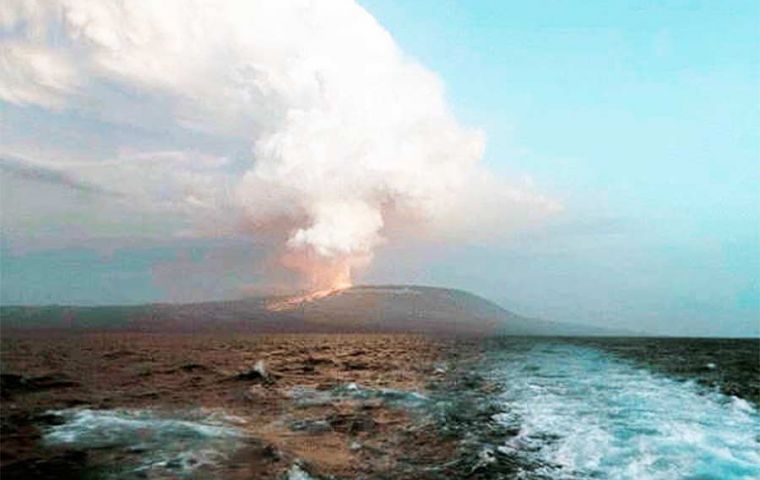MercoPress. South Atlantic News Agency
No human or wildlife damages reported after Galapagos volcano eruption
 The Wolf volcano last erupted in 2015
The Wolf volcano last erupted in 2015 Ecuador's Geophysical Institute has reported the Wolf Volcano, located on Isabela Island, the largest in the Archipelago of the Galapagos, went into eruption early Friday. The volcano, the highest of the Galapagos, is some 100 kilometers (62 miles) from the nearest human settlement.
The volcano’s slopes also host the pink iguana, of which only 211 were reported to be left on Isabela as of last August. Isabela Island also hosts four other active volcanos.
According to a statement from the institute, the eruption began at 2 am local time, generating a cloud of gas and ash with a variable height between 1,900 and 3,800 meters above sea level. The 1,707-meter-high volcano last erupted in May 2015 after 33 years inactive.
Meanwhile, Ecuador's Environment Ministry of Environment is yet to report on the possible effects on species, such as pink iguanas, yellow iguanas, and giant tortoises on the islands.
In a statement on Facebook, the Galapagos National Park said the volcano was emitting plumes of smoke and ash several thousand meters high, which were moving towards the north side of the island where no people are at risk.
The national park sent a group of park rangers and scientists working with pink iguanas to check out the situation. “The team confirmed that the habitat of these species is far from the eruption and the impact zone, so no additional protection measures are currently being considered,” the statement read.
Located in the Pacific approximately 1,000km (600 miles) off the coast of Ecuador, the Galapagos Islands are a protected wildlife area and home to unique species of flora and fauna. The archipelago gained worldwide notoriety thanks to British scientist Charles Darwin‘s observations on evolution made there.
The pink iguana was first spotted by park rangers in 1986 and classified as a separate species to other land iguanas on the Galapagos in 2009, according to the Galapagos Conservation Trust (GCT), a UK-registered charity that works on conservation on the islands.




Top Comments
Disclaimer & comment rulesCommenting for this story is now closed.
If you have a Facebook account, become a fan and comment on our Facebook Page!